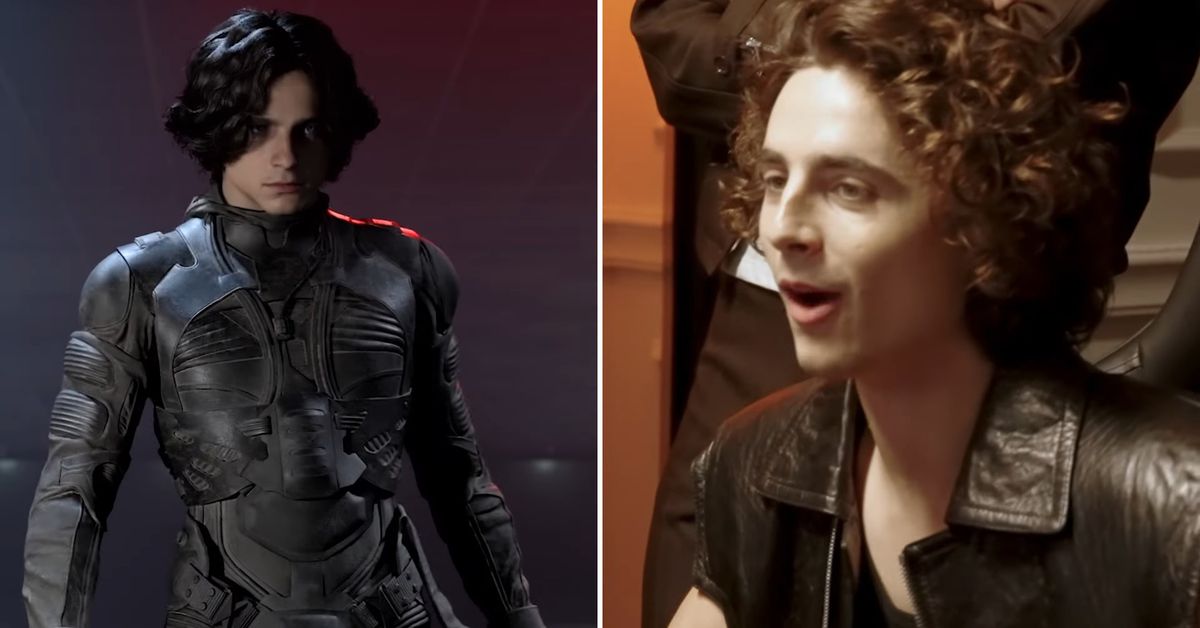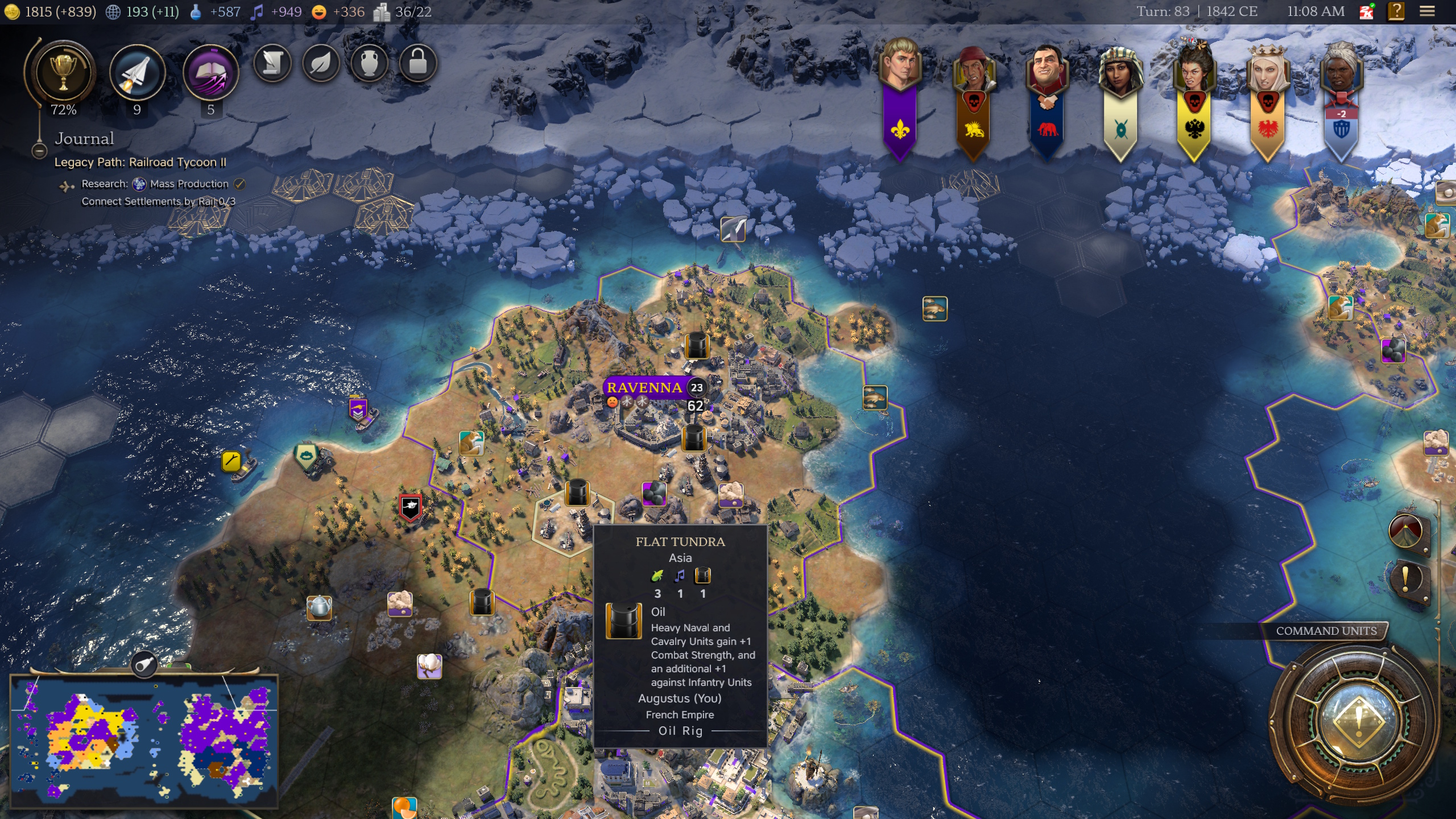Johnny Cage has been kind of a big deal for Mortal Kombat from the beginning. Scorpion and Sub-Zero may be the faces of the franchise, and Liu Kang its hero, but Johnny is critical to Mortal Kombat’s genesis.
He was the very first character that series co-creators Ed Boon and John Tobias filmed for 1992’s Mortal Kombat. Part stand-in for and part homage to Jean-Claude Van Damme — Johnny’s original look is ripped from the actor’s costume from Bloodsport — Cage was the closest thing MK would have to an everyman.
“Johnny Cage represented the audience’s perspective on what it would be like to be introduced to this crazy supernatural tournament called Mortal Kombat,” Boon recently told me.
Cage is also core to the creation of one of Mortal Kombat’s defining features: the Fatality.
And even after two franchise reboots, canonically dying (at least twice), and a whole-cloth timeline reset in Mortal Kombat 1, Johnny Cage is still that guy: a lovable asshole, a cocksure Hollywood martial artist who is strangely relatable, and the primary source of comic relief in a game series famous for its blood-spurting decapitations and disemboweling finishing moves.
Johnny Cage isn’t even his real name. In Mortal Kombat fiction, the Hollywood actor was born John Carlton. Cage is just his stage name; but when Boon and Tobias first conceived of Mortal Kombat’s cast of characters, he was known as Michael Grimm.
The birth of Johnny Cage
Mortal Kombat was famously born of a failed plan to build an arcade game around Jean-Claude Van Damme. The actor, then famous for his roles in Kickboxer, Double Impact, and Universal Soldier, rebuffed a pitch to be digitized by Midway Games for Van Damme: The Arcade Game. So Boon and Tobias, inspired by the popularity of Capcom’s Street Fighter 2, set out to make their own fighting game.
Tobias would define the archetypes for Mortal Kombat’s fighters. No. 1 on the list was the game’s hero, Liu Kang, inspired by martial arts actors Gordon Liu and Bruce Lee, according to Tobias. Just behind him, at No. 2, was Michael Grimm, envisioned as a “sidekick” to Liu Kang. Grimm’s first biography described him as “a martial arts superstar, trained throughout his life by great masters from around the world. He is the current box-office champ and star of such movies as ‘Dragon’s Fist,’ ‘Dragon’s Fist II,’ and the award winning ‘Sudden Violence.’”
:no_upscale()/cdn.vox-cdn.com/uploads/chorus_asset/file/24940133/michael_grimm_sketch.jpg)
Boon and Tobias hoped that Van Damme would play him. “We saw JCVD’s character as the Han Solo to Liu Kang’s Luke Skywalker,” Tobias said in a 2021 thread on X recalling the early days of Johnny Cage’s creation.
Even after Van Damme turned down the role, “Ed and I thought the character as a Hollywood star would still work in our game,” Tobias said. “We even kept my little pencil doodle that had the character in JCVD’s Bloodsport attire.”
Tobias and Boon picked Michael Grimm as the first character to shoot for Mortal Kombat, in part, Tobias recalled, “to excise the roller coaster vibes we had just been [through] trying to land JCVD.” Tobias enlisted local martial artist friends from the Chicago area for the shoot. Daniel Pesina was brought in to perform as Michael Grimm, wearing attire similar to what Van Damme wore in Bloodsport: spandex shorts and a belt, plus studded bracers and slippers. To sell the smug Hollywood actor stereotype, Pesina would throw on sunglasses at the end of every round.
“Early versions of Johnny Cage didn’t really have a fighting style per se,” Boon told Polygon. “We never sat down and asked ourselves, ‘What kind of fighting style should Johnny Cage have?’ We had a list of punches and kicks […] simple attacks like high kick, medium kick, low kick, and the same rapid-fire punch system that all of the characters shared. His special moves and Fatalities for the most part were created using those same basic attack animations. For example, his shadow kick was simply his medium kick with a special effect applied and we propelled him forward. We had a very limited amount of memory for the game’s animations, so we had to be resourceful.”
:no_upscale()/cdn.vox-cdn.com/uploads/chorus_asset/file/24091560/cage_vs_kang.jpg)
Johnny Cage’s initial combat design got done in post. “We had a list of basic moves that we worked through,” Tobias told Polygon. “One of them was ‘projectile.’ We went through several throwing motions on set. Afterward, while processing the frames, we picked the fling motion that we ended up using, and I created the glowing green projectile. Ed created the shadow kick while programming, and I created the tinted palettes we used on Cage’s frames. That stuff happened after our filming session. […] We did not have either of [those moves] specifically in mind when recording in [the] studio.”
But as fans know, it’s not just the moves but the attitude that defines Johnny Cage. That came later too, though. “Back then we didn’t have the technology to give Johnny Cage the amount of pizazz and flair that he has now,” said Boon. “So, he was a little bit of a tamer version of the Johnny Cage that players know and love today.”
Boon and Tobias did, however, have the concept of the Fatality in mind while filming Pesina as Cage, albeit in a very different form. Originally, only the big boss of Mortal Kombat, Shang Tsung, would be equipped with a fatal finishing move. According to Tobias, early iterations of Mortal Kombat would have Shang Tsung behead the player with his sword at the end of his boss fight. “In anticipation of it, we recorded the actors falling to their knees and slumping to the ground,” Tobias said.
Mortal Kombat’s original version of the Fatality was called a Death Blow. “It was similar to what became our Fatality, but it was kind of anti-climactic,” Tobias said. “Like a PG-13 rated Fatality. No blood. No gore.”
:no_upscale()/cdn.vox-cdn.com/uploads/chorus_asset/file/24940302/Bloodsport_1988.jpg)
Tobias, who was responsible for all of the game’s graphics, gave Boon the beheaded animation frames for Johnny Cage. Then Boon got creative, using Johnny Cage’s uppercut animation to behead his opponent — who was also Johnny Cage, “because at that early stage he was the only character we had,” Tobias said.
“I remember seeing Johnny Cage punch his own head off for the first time in Ed’s office and being shocked and excited. Shocked at how cool and gory it was and excited because it solved our end-of-match lull that we were looking for a solution for.”
Boon and Tobias’ work on Mortal Kombat had created “buzz” around the Midway office, but even Mortal Kombat’s co-creators had reservations about the Fatality moves. Were they going too far?
“We had [Midway game designer and Defender creator] Eugene Jarvis as our mentor; he was head of the department and he had just done Narc, which was a pretty violent game in its own right,” Boon told Polygon in an interview for Mortal Kombat’s 30th anniversary. “If anything, we were encouraged to go even further. But I do remember a few times, like the Sub-Zero spine-rip fatality, I remember saying out loud, ‘I don’t think we can get away with that.’ But everybody was so excited about it. It was pretty much, ‘You can’t take that out.’ And, at the end of the day, I think they were right.”
:no_upscale()/cdn.vox-cdn.com/uploads/chorus_asset/file/24940239/Mortal_Kombat__Collectors_Edition__1992__cover.jpg)
At some point during early development, Boon and Tobias changed the character’s name from Michael Grimm to Johnny Cage. Tobias said he doesn’t recall how they landed on that name choice, but the homage to Jean-Claude Van Damme’s first two initials seems to have played a part.
Tobias would go on to flesh out Cage’s story in a mail-order comic book that he wrote and drew, defining Cage as a Hollywood star taking part in the deadly Mortal Kombat tournament “to prove he wasn’t a fake.” Developers at Midway and now at NetherRealm Studios would amplify Johnny’s Hollywood attitude in subsequent games. According to the endings of Mortal Kombat and Mortal Kombat 2, Cage would use his experience in the tournaments to craft a series of martial arts blockbuster movies called — what else? — Mortal Kombat.
The death of Johnny Cage
Mortal Kombat fighters come and go from game to game. The latest entry, Mortal Kombat 1, brings back a handful of fighters from the series’ “3D era” that haven’t been part of the playable roster in a decade or more. But Johnny Cage’s absences from the franchise have been few and far between.
Mortal Kombat 3 is a notable exception. Cage did not appear in that game because Midway killed him off screen. His death was later retroactively explained in an expanded home console version of the game, Mortal Kombat Trilogy, which featured a new actor playing Cage, Chris Alexander.
:no_upscale()/cdn.vox-cdn.com/uploads/chorus_asset/file/24940338/mk3_select.png)
:no_upscale()/cdn.vox-cdn.com/uploads/chorus_asset/file/24940339/mktrilogy_select.png)
Tobias says the reason to kill Cage, however briefly, came down to a simple decision: The developers had limited memory resources, and Cage simply wasn’t popular with Mortal Kombat 2 players.
“Johnny Cage (despite rumor and nonsense) was cut because he was the least selected character in MK2,” Tobias said. (The rumor and nonsense Tobias refers to is a likely nod to lawsuits that Mortal Kombat 2 actors, including Daniel Pesina, filed against Midway seeking unpaid royalties for using their likenesses in home versions of the games.)
Mortal Kombat Trilogy explained that Johnny Cage had been killed in battle with “an Outworld extermination squad” prior to the events of that game, but that he managed to “cheat death when his path to the afterlife is blocked by the merger of Earth and Outworld.” Cage’s ending in MK Trilogy would explain that, after achieving victory against Shao Kahn, he would ultimately die again.
Tobias explained that while Cage’s initial “death” was largely due to memory limitations, MK Trilogy, which was released on CD-ROM, had no such restrictions. “So we used the opportunity to bring back Johnny Cage,” he said. “[Mortal Kombat]’s fiction was directly [affected] by character cuts. We twisted and turned and patched and did everything we could to explain away why a character was gone and it got even worse when we tried to explain why they came back.”
“I apologize for the roller coaster of fiction used to navigate character deaths/undeaths in those early games,” Tobias said, then pointed his finger at Mortal Kombat fans in the Chicago area. “They were the real deciders of who lived and who died,” he said, referring to player data from the local arcade machines that Boon, Tobias, and other Midway employees would use as a resource.
For Mortal Kombat 4, the final arcade game in the franchise, Boon and Tobias would bring Cage back from the dead again. According to that game’s lore, Cage, now chilling in the heavens, pretty much just decides he doesn’t want to be dead anymore. Then, for magical reasons, Raiden restores Cage’s deceased soul so he can fight alongside Liu Kang against a new threat: the evil former Elder God, Shinnok.
:no_upscale()/cdn.vox-cdn.com/uploads/chorus_asset/file/24940386/mkda_jc_ending_screenshot.jpg)
Midway would later go on to poke fun at itself and the multiple resurrections of Johnny Cage in Mortal Kombat: Deadly Alliance. According to his character bio in that game, “Johnny Cage had been fed up with the lame writing on his current movie, Mortal Kombat: The Death of Johnny Cage, in which his character repeatedly died and was resurrected.” The Hollywood studio employing Cage “felt that the hero needed to take a fall for dramatic purposes,” leading to Johnny ultimately walking off set — to go fight alongside Raiden and friends once more.
In Mortal Kombat: Deception, Johnny Cage dies again (and gets resurrected again), becomes a slave of the dragon king Onaga, and then is freed by Liu Kang and Ermac. Johnny is not playable in Deception, but he returns for Armageddon, during which he is killed one more time, decapitated by an unspecified foe, according to the introduction of 2011’s Mortal Kombat. (In Cage’s ending in Armageddon, he is said to have renounced his superficial lifestyle and found enlightenment with the help of Shaolin monks. Tobias has said that most Mortal Kombat endings are fun “what if?” scenarios and shouldn’t be taken as canon.)
The rebirth
Faced with an impossibly tangled storyline and the crushing weight of more than 60 playable characters, NetherRealm Studios decided to reboot Mortal Kombat and send Johnny Cage into unknown territory: his dad era.
For 2011’s Mortal Kombat, Cage is reintroduced as a young, cocky martial artist turned Hollywood action star. That game reimagines the events of the first three Mortal Kombat games as part of a new timeline formed by Raiden, which conveniently skips right over a Johnny Cage death or two. The ensuing storyline also brings Sonya Blade and Johnny Cage together: They marry, have a kid, and then divorce.
Johnny thrives in this era, leading his daughter, Cassie Cage, into battle against the forces of evil. More importantly, he comes face to face with his younger, cockier self in a collision of timelines in which middle-aged Johnny is forced to fight alongside a glitzy, glamorous, youthful Johnny.
:no_upscale()/cdn.vox-cdn.com/uploads/chorus_asset/file/24940387/Mortal_Kombat_11___Young_Johnny_Cage.jpg)
As of Mortal Kombat X, where Johnny leads the “Kombat Kids” — Cassie Cage, Jacqui Briggs, Kung Jin, and Takeda Takahashi — and spars verbally with his ex-wife, Sonya, the character has been voiced by Andrew Bowen. The voice actor describes his version of Johnny Cage as the “elder statesman captain of the team” who fights for Earthrealm against Shang Tsung, Shao Kahn, Kronika, and other bad guys.
Like Boon and Tobias, Bowen said he sees Johnny as a representative of the audience in Mortal Kombat games. But more importantly, Bowen said, Cage is the balance.
“The themes of the story, all of its arcs, are deep and serious drama, [and] with any good entertainment you gotta balance out the light and the dark,” Bowen said in a recent interview with Polygon. Amid the world-ending violence and dripping gore, “he’s this opportunity to have a giggle,” Bowen said. “His reactions [to Mortal Kombat’s stories] are straight up ‘That’s ridiculous!’ It really helps the world to kind of keep that balance.”
Tobias agrees. He has called characters Johnny Cage, Sonya, and Kano the yin to Outworld and NetherRealm’s yang — meaning the human characters help to balance the half-dragon people and 10,000-year-old princesses of other realms.
Bowen was already familiar with Johnny Cage before he took over the video game role in 2015. “I don’t think there’s a person on Earth who hasn’t played this game, or cracks a little smile when they hear Johnny Cage’s name,” he said. Bowen said that, as a father himself, “it was a blessing to be able to start [with Mortal Kombat X]. We hadn’t seen that [version of] Johnny yet, so I could put my take on him. Being a dad, and going through that I had done the research. It was great to see a Johnny that was regretful, too cocky in his youth.”
:no_upscale()/cdn.vox-cdn.com/uploads/chorus_asset/file/24940394/Mortal_Kombat_1___Official_Jean_Claude_Van_Damme_Trailer_0_16_screenshot.jpg)
Playing the dual roles of young and old Johnny in Mortal Kombat 11 seems to have heavily informed Bowen’s portrayal of the character in Mortal Kombat 1. In the new game, Liu Kang’s reworked timeline features a Johnny both confident in his talent and chastened by box-office failure. The new Johnny is both self-serving and selfless, committing to the role of Earthrealm’s savior (while also recognizing the potential box-office draw of making a new movie based on his adventures).
“The core aspects of the character are there in MK1. There’s a baseline that I don’t think you’re ever not going to see Johnny being a movie star and cocky in some way,” Bowen said. “But there’s humanity that we put in with MKX and 11 — and this one is a way more down-to-earth Johnny.”
Cage is also going back to basics — back to the beginning of Mortal Kombat history — thanks to the appearance of Jean-Claude Van Damme in Mortal Kombat 1. Closing the loop on 30 years of history, NetherRealm — no doubt with a lot of help from parent company Warner Bros. — finally secured Van Damme’s likeness for a skin for Johnny Cage.
“For me, Van Damme participating in the new MK is surreal,” Tobias told me. “I don’t know if the average fan is aware of the history or even if Jean-Claude was aware [of his impact on the game] given that it was 30-plus years ago. I’m sure he’s aware now. I’m very happy to see that come together.”
That deal came together, according to Boon, after multiple attempts, “a number of phone calls, and talking to different representatives over the years. For one reason or another the planets did not align. But ironically, or poetically, we were finally able to make it happen in Mortal Kombat 1,” Boon said. “Honestly, I still don’t know what Jean-Claude Van Damme’s memory is about his history with Mortal Kombat. I never spoke to him about it. But at the end of the day, we were finally able to put him in the game. It took us over 30 years, but we eventually did it.”




